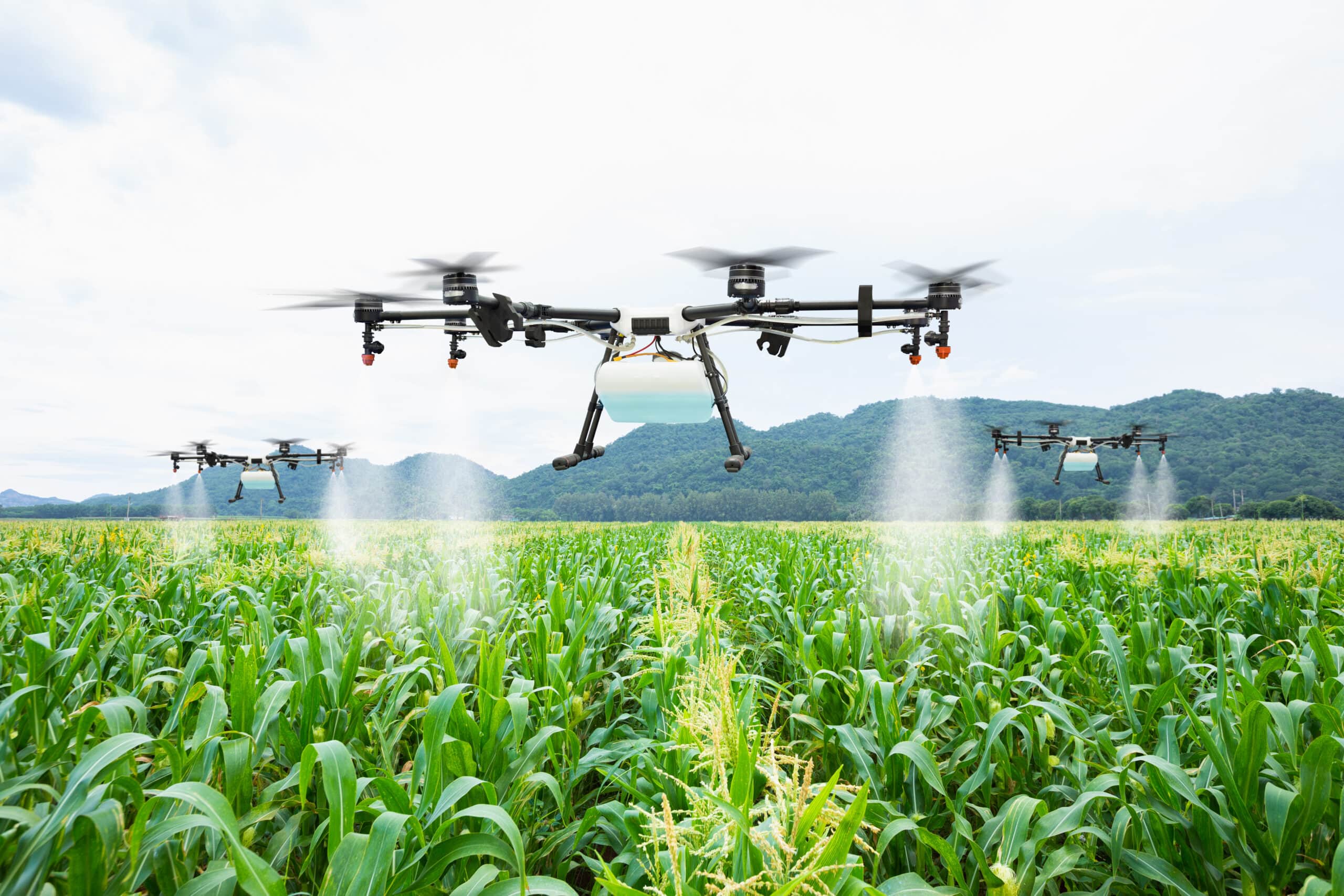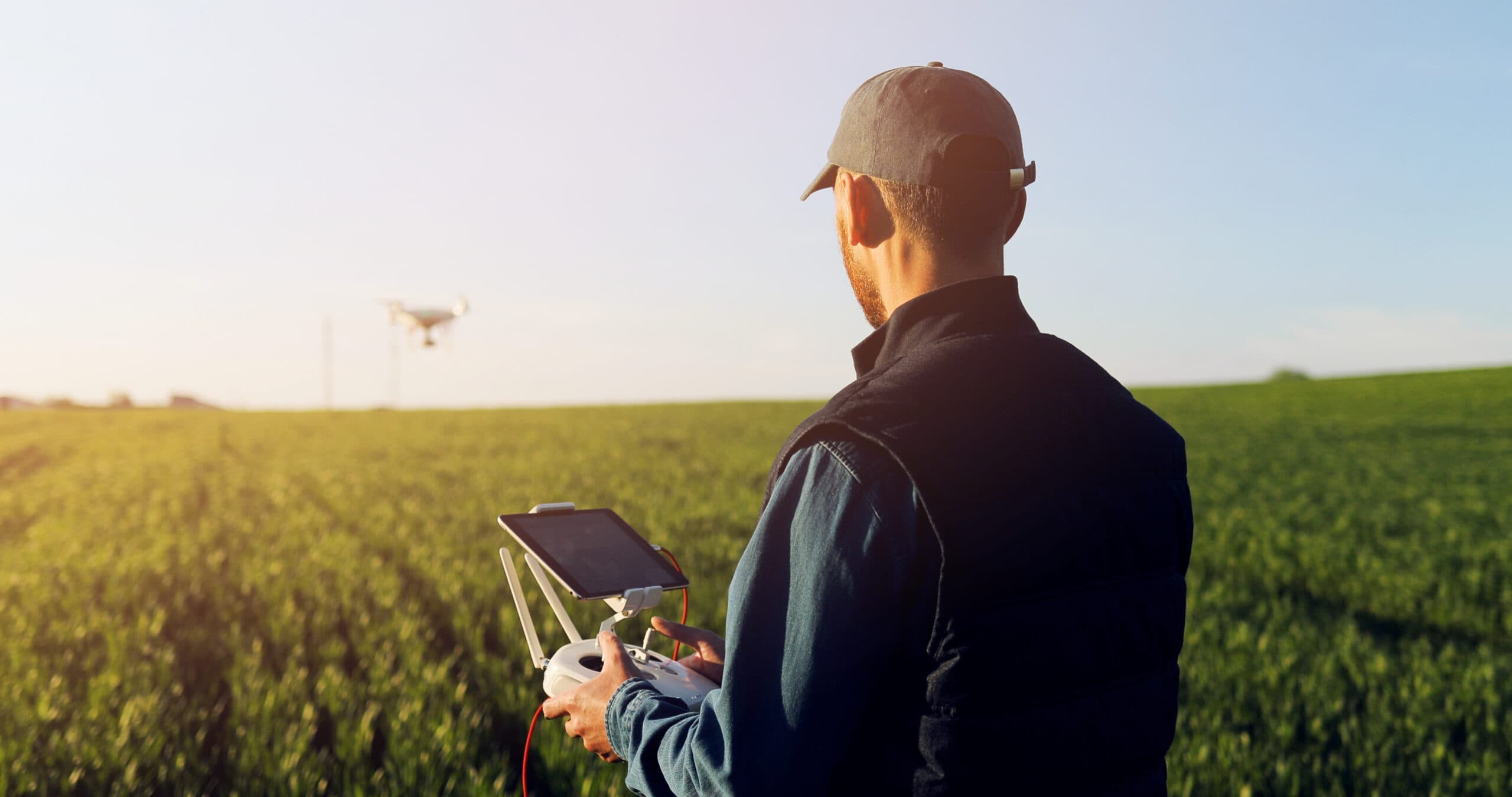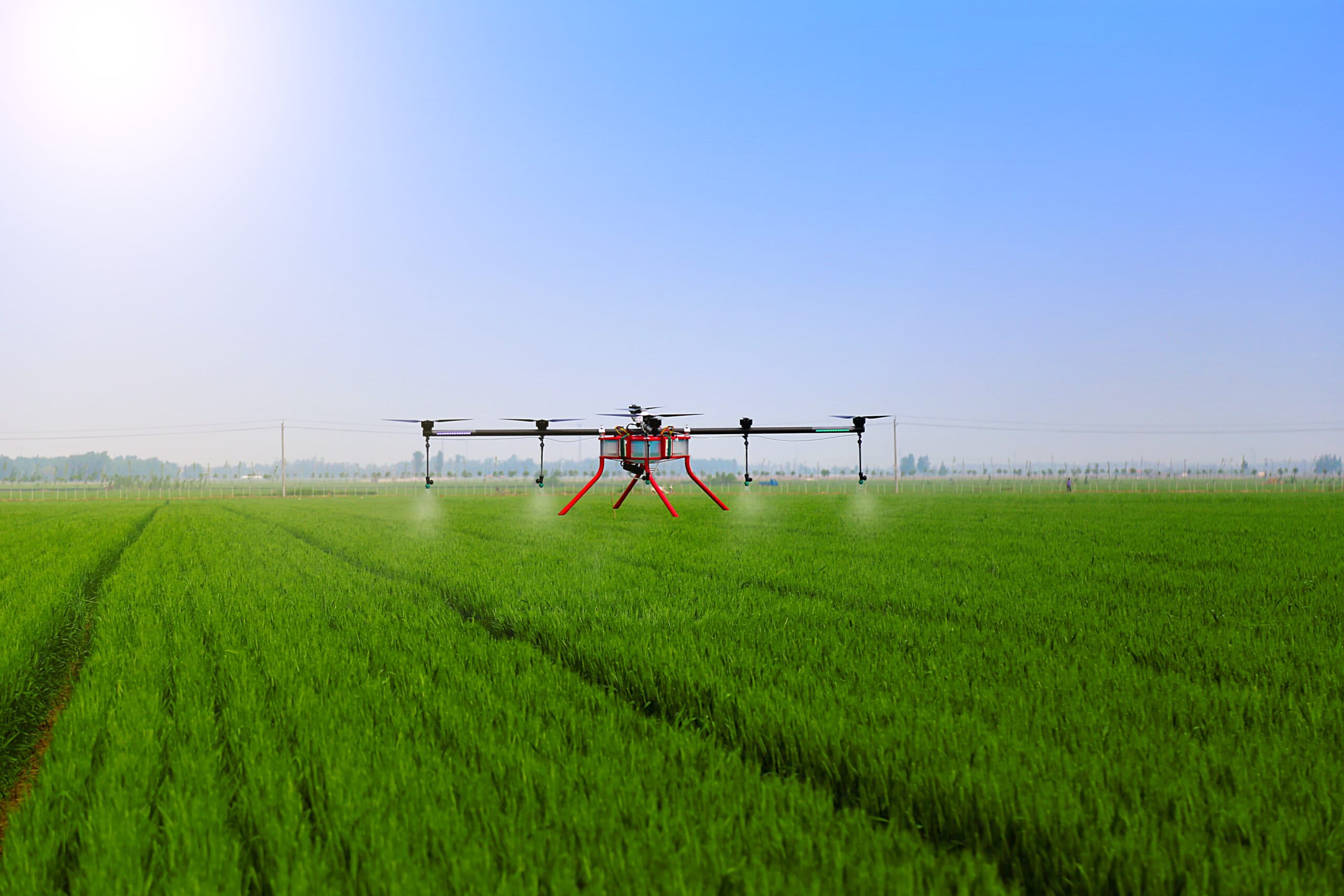[startwrap class=”row”]
[divup class=”col-lg-7″]
Drones are an excellent investment for agribusiness across Australia, creating never before seen efficiencies in operations. But how do the costs stack up and how long does it take to get a return on that investment?
Drones are an innovative new tool in agribusiness
Drones are the innovative new technology shaking up agribusiness. The correct drone for your agricultural needs can deliver unmatched benefits in terms of precision, data and monitoring, as well as general, day-to-day agricultural tasks like the distribution of pesticides and fertilizers.
Precision
That precision comes with how crops are planted, irrigated, fertilized, and treated with pesticides.
With the flexible settings of a multi-rotor drone, you can achieve total control in how seeds and other necessary products are distributed, with precision accuracy.
It means there is significantly less wastage, especially when compared with helicopter spraying. There are massive environmental benefits too, and you can save hours upon hours of labour.
It all comes back to increased control, which allows you to achieve better quality and better results.
Data and Monitoring
Drones are able to monitor your farmland and provide an ever-growing digital picture of your land.
It allows you to notice and rectify issues as they arise and allows for really robust monitoring of your land and crops.
Efficient Distribution of Seeds, Pesticides & Fertilizers
Then there’s the saved labour. Drones are highly efficient and effective in crop spraying, seed distribution, and ongoing crop care.
It makes for totally streamlined operations in your business. Learn all about how drones are being used in agriculture.
Of course, their benefit to the industry is only expected to continue to grow astronomically in the following years.
So, we know drones are an amazing investment for agriculture. But how do the costs weigh up?

The initial investment — the drone
The initial investment is obviously the drone. This is a fairly significant cost but we do recommend you look at it as an investment for your business.
So, which drones are best for agriculture?
The best drone for your agribusiness will depend on what you’re hoping to achieve with it.
You might want to streamline operations through crop spraying. Or, you may want to achieve better visualisation of your land. Perhaps, you just want something to provide you with accurate data and occasionally check if a certain pump is running — without having to drive across the farm.
We know there are different goals for different businesses within the agriculture industry. So, below are our favourite drones for crop spraying and for data and visualisation.
DJI Agras T30
For spraying and spreading chemicals, pesticides and fertilizers, we recommend DJI’s Agras T30 drone. It offers a 30-litre spraying tank, a spherical radar system, and a smart agriculture cloud platform.
According to DJI, this drone sprays 40 acres in an hour. It’s a leader in terms of drones for agribusiness.
The exact cost will depend on the accessories you need and where you purchase the drone but a ballpark figure for this drone is roughly $50,000.
DJI Mavic 3
For better visualisation, data recording, monitoring, and mapping of your farmland, as well as additional benefits such as counting or assisting in herding stock, then DJI’s Mavic 3 drone is an amazing product.
This drone is amazing for photography and videography, however, the powerful visualisation and the quality of the drone makes it perfect for agribusiness too. You can monitor your land simply and efficiently, and capture updated images to keep a grasp on your agricultural business.
It depends where you purchase it and the accessories you need but the DJI Mavic 3 will set you back roughly $3,000.

How do these agricultural drones compare with entry-level drones?
We wouldn’t be so quick to write off entry-level quadcopter drones. While these don’t come with those same robust benefits as the professional-grade drones featured above, they can still play an important role on your farm.
The in-built cameras in these make them an amazing interim option for simple tasks and saving time around the farm. You can monitor crops, snap update images, and check on pumps and other automated processes using these drones.
An entry-level quadcopter drone can be really useful, however like with most technology, you get what you pay for. While these can be a great tool to use in your business, entry-level drones will be less reliable, less efficient, and will typically offer a shorter lifespan.
There are some add-ons you may need to make the most of your drone
As drones become more and more complex, more supporting equipment may be needed. As an example, if you’re a new operator, you may need to pick up spraying equipment — which can be a large investment.
Of course, if you’re already running a successful agribusiness, then you’ll likely already have this spraying equipment available.
Your drone may require spare batteries or your setup may generally require items like spill kits, PPE, transfer pumps, generators, and mixing tanks, as a few examples. Again though, a lot of your existing equipment can usually be repurposed here.
So, if you’re a relatively new operator, all of this equipment may need to be purchased along with your drone.
Operational costs to consider
There are a few operational costs to consider…
Battery Charging
There are some costs associated with charging the battery for your drone. This is of course much cheaper and much more environmentally friendly than the fuel you would use previously though.
Training
If you plan to take on the drone flying yourself, you’ll need to consider the cost of training. You will require training to be able to fly the level of multi-rotor drone required for crop spraying.
Much like the initial cost of the drone though, we view training as an investment for your business. It’s a once-off expense that empowers you to save costs across the entirety of your business.
UAV Training offers a variety of drone training courses in Brisbane and Sydney.
Drone maintenance costs to consider
In comparison to other agricultural tools and equipment, drones don’t require the same level of maintenance. There’s no periodic servicing or maintenance to be completed.
One maintenance cost to consider is the batteries. Drone batteries, like any other kind, will eventually wear out and you’ll have to cover the cost of replacing them.

The bottom line
There’s so much to weigh up and consider when it comes to the cost associated with using drones in agriculture.
So, what’s the bottom line?
Drones are a cost-effective investment for agribusiness. These provide you with an opportunity to future proof your business and when each cost is weighed up, drones are an investment that will save you money.
Drones are a cost-effective alternative to strenuous labour
An important factor in weighing up the costs involved with drones is to consider how much it’s costing you without a drone.
So, consider what you’ll use your drone for… Seed distribution? Crop spraying? Improved data and visualisation?
Consider how much time is spent completing these tasks without a drone and how much that’s costing you on a daily, weekly, or monthly basis.
The return on investment depends — but it will always come
Spending roughly $50,000 for a drone may seem like a lot. These drones are robust and durable though, so they’ll continue providing cost-saving benefits for years to come.
The return on investment will depend on the size of your agribusiness, the number of crops or stock you’re working with, and the frequency of planting and spraying.
The more crops you have and the more time spent maintaining these will obviously mean the sooner your return on investment.
However, we’re confident that the return on your investment will always come soon enough to make it a worthwhile investment for your business.
The data, precision and accuracy benefits outweigh initial costs
Time and labour aren’t the only ways drones save you serious money. Consider wastage of pesticides, seeds, and chemicals. Consider how much the unknown was costing you.
The precision and accuracy that comes with the crop spraying and seed distribution as well as the second to none insights provided through that new data and visualisation are beyond valuable for your business.
Create more sustainable practices in your business
That eliminated wastage of chemicals and pesticides, only planting exactly what you need to, and almost entirely eliminating the need for fuel creates a really environmentally friendly setup for your farm.
Drones are an amazing way to create a more sustainable agricultural business, create massive cost savings, and future proof your business
Of course, if you’re ready to make the leap and begin using drones in your business, UAV Training is a leading drone training company. We’d love to help you get started.
Happy flying!
The UAV Training Australia Team
[divup class=”col-lg-4 offset-lg-1 blog-images”]
[endwrap]
